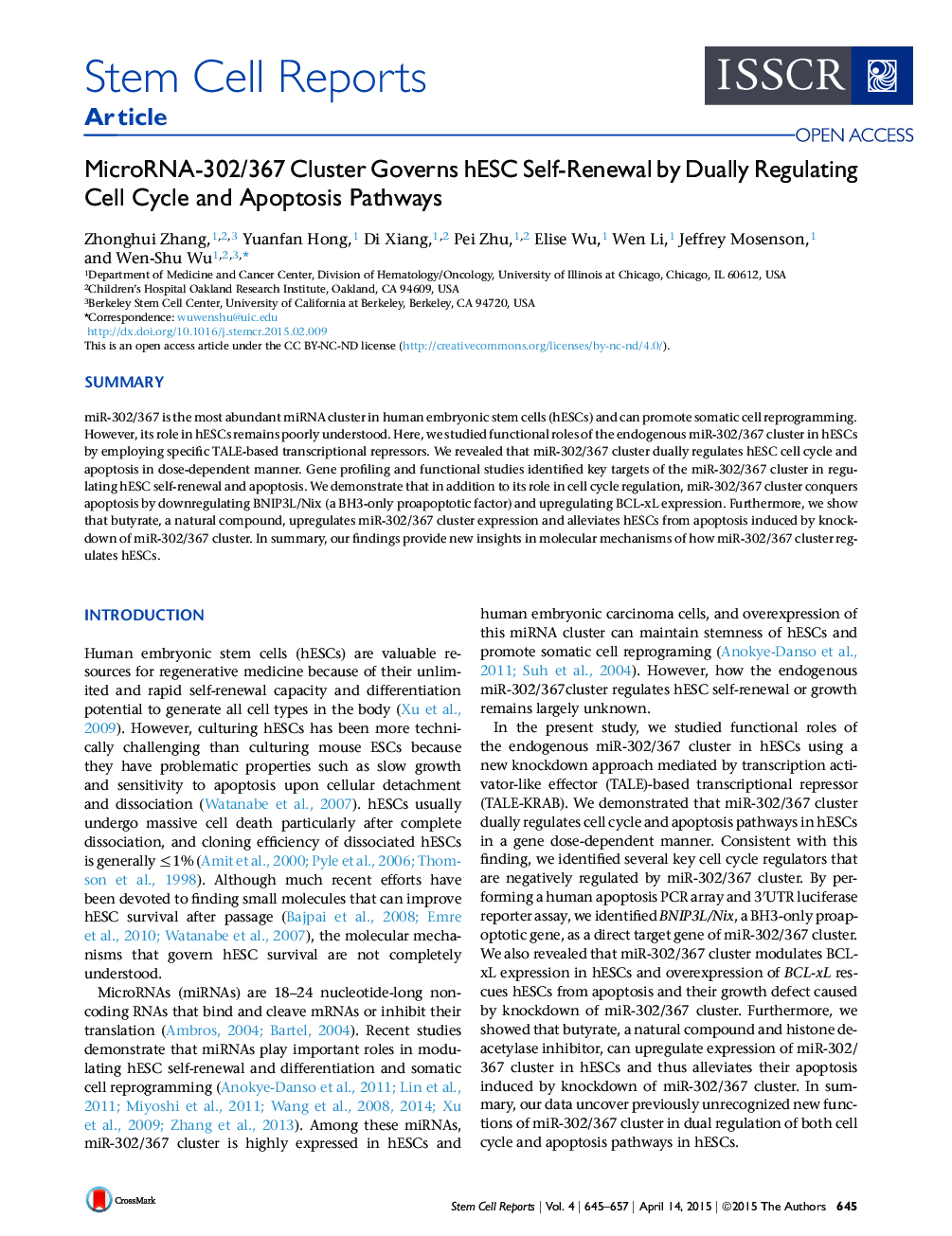| Article ID | Journal | Published Year | Pages | File Type |
|---|---|---|---|---|
| 2093614 | Stem Cell Reports | 2015 | 13 Pages |
•Knockdown of the endogenous miR-302/367 cluster attenuates hESC self-renewal•Endogenous miR-302/367 cluster dually regulates cell cycle and apoptosis in hESCs•miR-302/367 cluster regulates hESC self-renewal by inhibiting apoptosis pathway•Butyrate suppresses BNIP3L/Nix expression via miR-302/367 cluster
SummarymiR-302/367 is the most abundant miRNA cluster in human embryonic stem cells (hESCs) and can promote somatic cell reprogramming. However, its role in hESCs remains poorly understood. Here, we studied functional roles of the endogenous miR-302/367 cluster in hESCs by employing specific TALE-based transcriptional repressors. We revealed that miR-302/367 cluster dually regulates hESC cell cycle and apoptosis in dose-dependent manner. Gene profiling and functional studies identified key targets of the miR-302/367 cluster in regulating hESC self-renewal and apoptosis. We demonstrate that in addition to its role in cell cycle regulation, miR-302/367 cluster conquers apoptosis by downregulating BNIP3L/Nix (a BH3-only proapoptotic factor) and upregulating BCL-xL expression. Furthermore, we show that butyrate, a natural compound, upregulates miR-302/367 cluster expression and alleviates hESCs from apoptosis induced by knockdown of miR-302/367 cluster. In summary, our findings provide new insights in molecular mechanisms of how miR-302/367 cluster regulates hESCs.
Graphical AbstractFigure optionsDownload full-size imageDownload as PowerPoint slide
